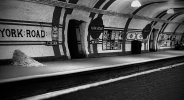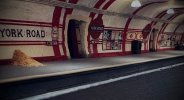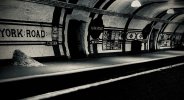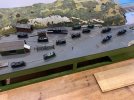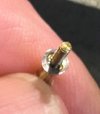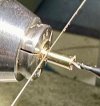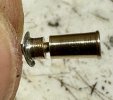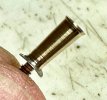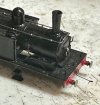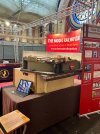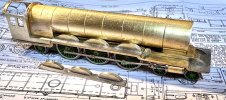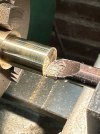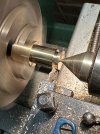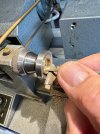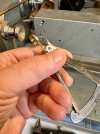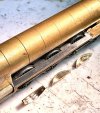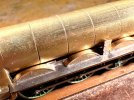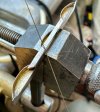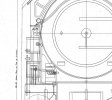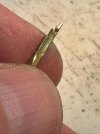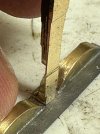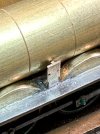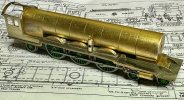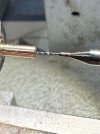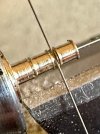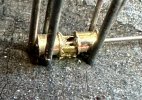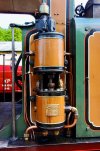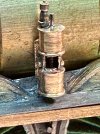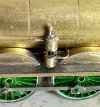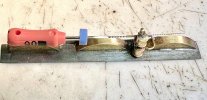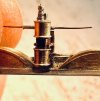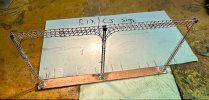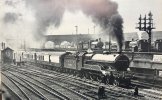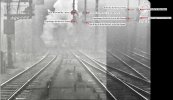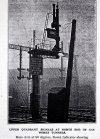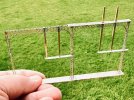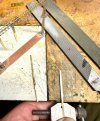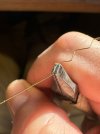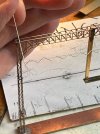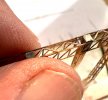I thought there might be some interest in my painting techniques for London buildings. The first coat is Farrow & Ball ‘London Clay’ to give a dullish background, and ‘Downpipe’ for the slates.
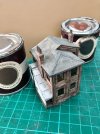
The yellow brick colour is then added with a wash of ‘Afrika Corp Tan Yellow’. More care was taken with the chimneys and window/door lintels painted in a red oxide colour (‘Picture Gallery Red’) and the chimney flaunching and the windowsills in ‘London Stone’. The sloping roof was given a wash with the Lifecolor ‘Roof Grey’.
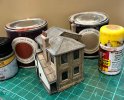
The brickwork was then darkened in places and given some richness using Lifecolor ‘Sleeper Grime’ mixed in situ with the tan yellow colour. some individual bricks were picked out with either colour and any dodgy brush-marked areas painted out. White and ‘Weathered black’ were mixed and used for the lead flashing, whilst the sloping roof had further coats of ‘Roof grey’ mixed with Lifecolor ‘Weathered black’ and F&B ‘Downpipe’ - which was also re-applied on the main roof.
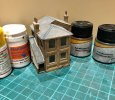
The final weathering was achieved with some feint washes of ‘London Stone’ to ‘bring the whole lot together’ and, most importantly, the use of ‘Dunkel grun’ washes to darken areas with rain run-off and add mosses & lichens.
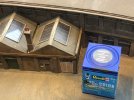
In the this close up photo, the potato warehouse roof furthest away has had a wash on its north face, the one nearest hasn’t - the effect is very subtle, but it really brings the model to life.
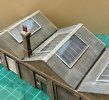
Finally, the thing that brings the layout to life is colourful advertisements, figures and vehicles. The advertisements help massively in this view: the wall and pavement have recently been weathered.
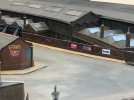
The use of bright red patches is an excellent way of drawing your eye into a scene.
All of the colours are applied in washes, rather than discrete colour blocks, it is an impressionistic way of painting, rather than slavishly painting brick by brick: that is needed occasionally for decorative patterns, but I tend to favour letting the eye see what it thinks it sees.
I hope these ramblings are of some help, I would strongly recommend that people give the dark green washes a try around areas that are north facing, damp i.e. near the ground, or where people rub.
Tim
